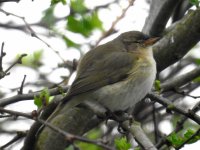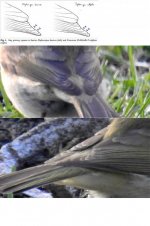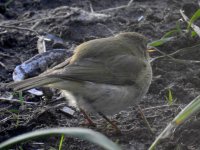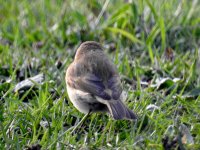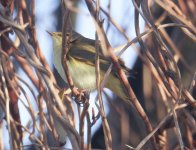Jane Turner
Well-known member
I've been testing out the suggested primary spacing method to help ID possible Iberian Chiffchaffs - basically can you see it in the field with a scope
https://britishbirds.co.uk/wp-content/uploads/2017/08/Gil-005.jpg
So imagine my surprise when I looked at this slightly odd looking Chiffchaff and found 3-4 to be equal to 4-5.
It did have slighly pale legs and some yellow in the face and the under tcs and had a contrasty pale green rump.... and I do have a good sound recording of its call which is definitely in the colybitta camp if a little deep sounding - my immediate reaction was to hang a recorder out of the window. Anyways I thought it was interesting, and the impression of the spacing was detectable in the field before it was confirmed in photos.
Call here
https://www.dropbox.com/s/znuu0piyzfu7jfq/collybita 17th April 2017.wav?dl=0
https://britishbirds.co.uk/wp-content/uploads/2017/08/Gil-005.jpg
So imagine my surprise when I looked at this slightly odd looking Chiffchaff and found 3-4 to be equal to 4-5.
It did have slighly pale legs and some yellow in the face and the under tcs and had a contrasty pale green rump.... and I do have a good sound recording of its call which is definitely in the colybitta camp if a little deep sounding - my immediate reaction was to hang a recorder out of the window. Anyways I thought it was interesting, and the impression of the spacing was detectable in the field before it was confirmed in photos.
Call here
https://www.dropbox.com/s/znuu0piyzfu7jfq/collybita 17th April 2017.wav?dl=0




